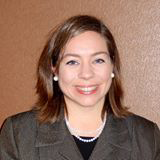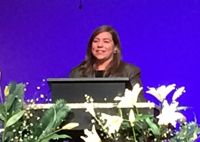
Proximity to Suffering: Not Whether but How and Why Race Matters in the Classroom
As I followed the #FergusonSyllabus twitter conversation just before this semester began, I considered ways to address race in a new way in my pastoral care course. Unmasking structures of suffering and developing anti-racist pastoral care practices are already important to both my research and my pedagogy. What is different about race matters this semester?
With only one required pastoral theology class in the curriculum, I take seriously my moral obligation to prepare students to be present and responsive to the personal and structural dynamics of suffering they will encounter in their various vocations. Rather than a coverage model that impossibly aims to address all kinds of suffering and all schools of responsible pastoral care practices, my course learning goals include preparing students to be present courageously and responsibly, ready with first responder tools and local referrals, committed to practices of self-and communal-reflection, and confident in how to begin when unpredictable issues arise in ministry. Every semester includes a special focus on loss and violence because these are predictably present in every community with varying intersections of race, gender, sexuality, ability, and many other embodied diversities. I wish that connections between race, loss, and violence were unpredictable, but they too are predictably present in some way in all communities. My question is not whether, but how and why race matters in the classroom.
The August 9 death of Michael Brown in Ferguson, MO, evokes immediate care needs around loss and violence: for the Brown family, the multidimensional Ferguson community, and indeed across communities, including seminaries, nationwide. This semester, while still discerning how to speak directly about race matters in Ferguson in the classroom, I was also involved in a multi-communal effort to remember Michael Brown and many other brothers and sisters who have died a violent death, to lament racism in all its forms, and to work toward alliances of solidarity in Tulsa where I live. Race-based violence is no stranger here, though like in most places it can be made to seem invisible or irrelevant. In 1921, Tulsa was the site of one of the most devastating race-riots in US History. A few years ago on Good Friday, Tulsa was the site of multiple racially-charged deaths. How then do Easter Sunday sermons and everyday care practices deliver truth-telling, hopeful good news? Pastoral theologians answer that we begin with attentive presence in the face of suffering.
Howard Thurman’s Jesus and the Disinherited is the first book my class reads, modeling one of 
my teacher’s practices. Thurman’s text helps the class begin to grasp language for the pastoral task of attention, particularly his refrain that suffering is when my or my neighbor’s “back is against the wall.” Language to talk about proximity to suffering includes: Whose back is against the wall? How do I recognize suffering in my neighbor’s experiences? What does it look like to stand in solidarity at the wall? Who and what serves as the wall? Race matters in Thurman’s work and attention to this matter is important for participating in life-giving pastoral care. Students are always amazed that Thurman’s 1940s reflections are fresh and relevant today, begging that deep question of human yearning: how long? Thus we begin in courageous self- and communal-reflection on personal experiences of suffering and complicity in suffering.
This semester, as part of introducing the course reading on the first day, I shared with students my own task of public theology on race matters. For my part in the Tulsa Vigil for Michael Brown , I composed a responsive prayer inspired by great thinkers including both Howard Thurman’s Jesus and the Disinherited and Pamela Lightsley’s on-the-ground theological reflections in Ferguson (http://www.bu.edu/today/2014/eyewitness-to-the-turmoil-in-ferguson/). This prayer vigil fell between the first and second course sessions, precisely when students were assigned to read Thurman’s text. Therefore, I invited each student into the task: engage Thurman’s text liturgically to speak about Ferguson in a way that they would or could use in their specific contexts—some are children’s ministers, some work in urban centers, some in rural multi-point charges, some anticipate a future call to ministry in a variety of forms. While we contain intersectionalities and diversities, all of us in the class this semester identify as white according to class conversation about standpoint.
On a Sunday afternoon, I shared a responsive prayer with neighbors in Tulsa at the Michael Brown vigil, citing Dr. Thurman and Dr. Lightsley. The following Thursday, each student in class shared their liturgical creations from the challenging, truth-telling, transformative words of Thurman. These liturgies of lament, truth-telling, and transformational hope are just a beginning, but one that I hope will open us to the challenging work ahead the rest of the semester and beyond.
I have a lot to learn and teach about being an active participant in solidarity at the walls of injustice, but in the meantime, I listen and speak in imperfect conversations that yearn for healing in a world of suffering. Now is the time to engage challenging conversations about race and violence. In his remarkable “Letter from a Birmingham Jail,” Dr. Martin Luther King, Jr. distinctly addressed white church leaders who considered themselves his allies. He wrote that the biggest mistake that white allies make is to call for patience and more time before engaging difficult conversations around race and violence in earnest.
What is different about race matters this semester? From her experience of public theology in Ferguson, Dr. Pamela Lightsley of Boston University calls this moment in history a Kairos moment where change is more possible and necessary than ever (http://www.bu.edu/today/2014/eyewitness-to-the-turmoil-in-ferguson/). Now is the time to be engaging conversations about race and violence in both word and action. More conversations emerge daily that urge us toward a timely theological and pedagogical response.
A recent Pew survey (http://www.people-press.org/2014/08/18/stark-racial-divisions-in-reactions-to-ferguson-police-shooting/) outlines some deep divisions by race about the timeliness of conversations about race and violence at this particular moment in history. Georgetown professor Dr. Marcia Chatelain’s #FergusonSyllabus project, #FergusonFridays, and #FergusonTeachInGU continue to be helpful (http://colorlines.com/archives/2014/08/following_ferugson_teaching_the_crisis_in_the_classroom.html). Take a look at the ongoing log of articles about Ferguson collected at the “Rhetoric, Race, and Religion” website, including statements by some seminaries and denominations (http://rhetoricraceandreligion.blogspot.com/p/the-murder-of-michaelbrown-reader.html). Read the newly launched “Race Matters in the Classroom” blog by Wabash Center for Teaching and Learning in Theology and Religion, and listen to reflections from theologians such as Duke Chapel director Dr. Luke Powery (https://www.youtube.com/watch?v=dZBYOPlytuU) and Vanderbilt Divinity School Dean Emilie Townes’ characteristically poetic prophetic form (http://www.fsrinc.org/blog/ferguson-o-ferguson).
There are many ways to engage conversations about race and violence. As a white female scholar and teacher, the only mistake seems to be to simply wait in silence, to call for patience, to wait for the right time. In my pastoral care class this semester, we composed liturgical resources to speak about Ferguson in conversation with Thurman’s classic text Jesus and the Disinherited. This has everything to do with pastoral care because responsible care practices begin where we recognize and remain present to suffering.
How are you engaging conversations about race and violence right now in your context(s)?
This was extremely helpful and well done. Thank you!
Thank you for the many resources you shared here, in addition to your own insights and practices.